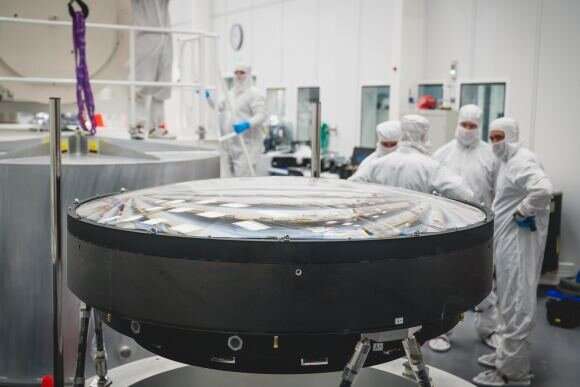This isn't so bad for smaller lenses, but we want bigger. Much bigger.
Enter the idea for using fluids to create lenses in space that are 10x–100x bigger. And the time it would take to make them would be significantly less than a glass-based lens.
FLUTE, or the Fluidic Telescope Experiment is run by principal investigator Edward Balaban at Ames Research Center in California's Silicon Valley. Collaborators on the experiment include researchers at Ames at the Goddard Space Flight Center in Greenbelt, Maryland, along with researchers from Technion, the Israeli Institute of Technology.
Their goal is to make possible the fabrication of fluid lenses in space that are not only bigger than their glass counterparts, but also just as high quality or better optically as making an earth-based lens. And this can be done in a fraction of the time.
In space, liquids eventually form a perfect spherical shape. In order to test the process first though, they stayed closer to home and used water as a medium to create fluid lenses. They had to make sure the water had the same density as the liquid polymers they were using to make the lenses so that the effects of gravity were effectively canceled out. Leaving out any mechanical processes, the polymers were injected into circular frames submerged in water and then solidified, creating comparable or better lenses than using standard techniques.
Next the team boarded two ZeroG parabolic flights to further test the process. Synthetic oils of varying viscosities were tested to determine which would work better. These oils were pumped into circular frames about the size of a dollar coin while the plane was in freefall, and again the researchers were able to make free-standing liquid lenses, though once the plane started lifting up again and the effects of gravity were felt the liquids lost their shape.
This experiment will be performed on the ISS (International Space Station) next and is already onboard, waiting for the arrival of Axiom-1 with Mission Specialist Eytan Stibbe slated to perform the experiment. There they will add the step of using either UV light or temperature to harden the liquid so that the lenses can be examined and tested by the researchers back at Ames on Earth.
A successful experiment will be the first time an optical component is made in space. If it succeeds, this will be the start of a new way to build telescopes, out in space. This would be a revolution in space-based manufacturing and the time needed to build one will be greatly reduced. And oh the sights we will see.



